
This is an installation of hanging pyramids with stealth lights shining from inside. It’s made with laser-cut Perpex hanging from fiber optics.
More… (piece not available from artist’s website)

This is an artificial forest installation which reacts to an audience’s touch organically like coral reef. The piece is cut from acrylic and rigged with microprocessors and sensors to simulate life-like reactions.
More…
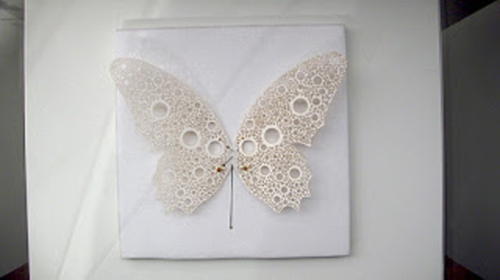 This piece was made by laser cutting holes into plywood, then laser cutting the shape of a butterfly. The piece was then mounted onto glass, which creates depth by adding shadows and reflections.
This piece was made by laser cutting holes into plywood, then laser cutting the shape of a butterfly. The piece was then mounted onto glass, which creates depth by adding shadows and reflections.
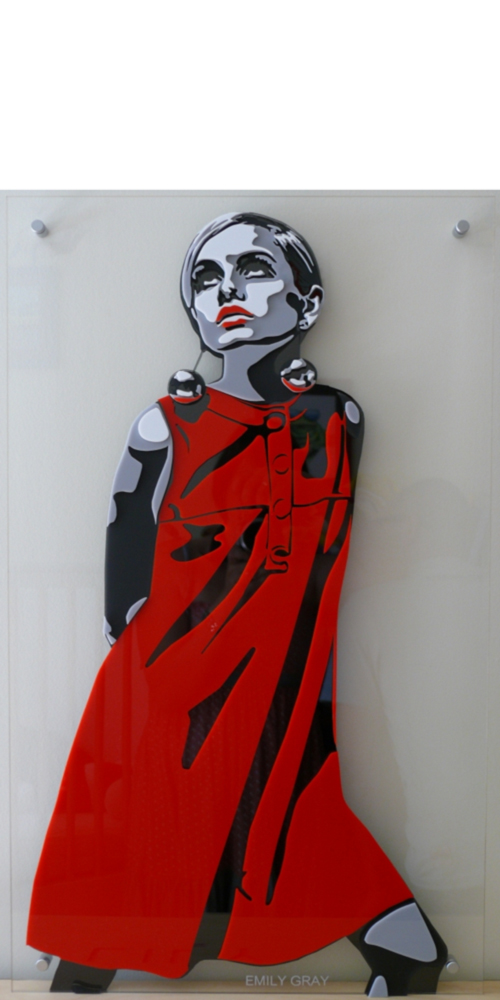 The piece was made by cutting each value in a different color acrylic. The artist then layered the acrylic to form the image. This is similar to printmaking.
The piece was made by cutting each value in a different color acrylic. The artist then layered the acrylic to form the image. This is similar to printmaking.
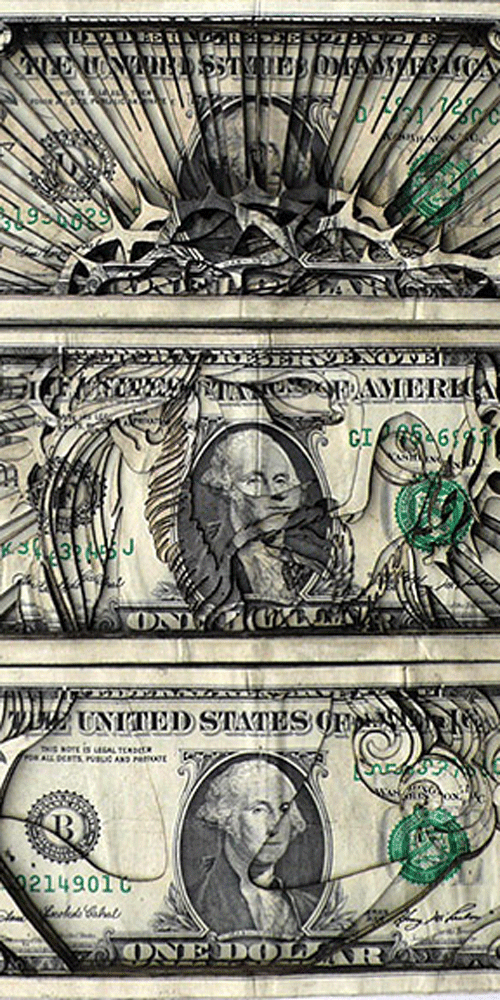 This piece was created by laser cutting a design into 1 dollar bills. The bills were then stacked to form a layered image. The image of Jesus cut into money is very impactful to the viewer.
This piece was created by laser cutting a design into 1 dollar bills. The bills were then stacked to form a layered image. The image of Jesus cut into money is very impactful to the viewer.
“Koi Puzzle” by Wenquing Yan is a Three-Dimensional Puzzle which moves like a fish would move, from side to side. Initially designed in Maya, then traced in illustrator and lasercut.
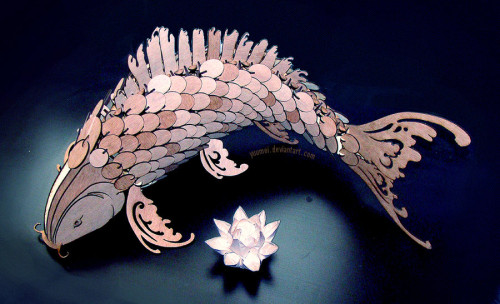
One can find more of Yan’s work here on deviantArt, which is her primary site. Here is the Koi Puzzle directly.
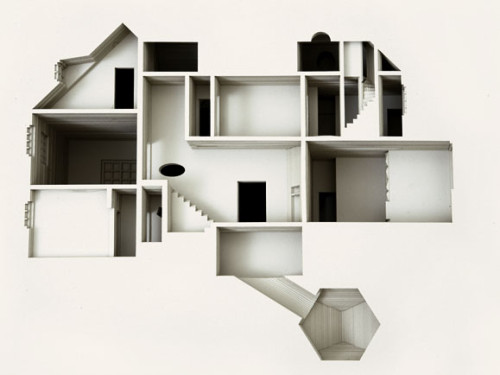
Your House is a work by Eliasson where he creates a house by laser cutting pieces of a book. He presents this work in the form of a video. This piece is made out of 454 pieces of paper, all laser cut and bound together into a book.
More…
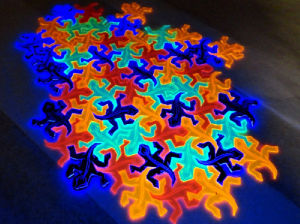
Sean Michael Ragan created vector art of tessellating lizards based off of M. C. Escher. His friend Angus Hines used a laser cutter to cut it.
(more…)
Seaserpent is a lasercut artwork by London-based illustrator Martin Tomsky. He says about whose personal work and illustrations for children are primarily about creating new worlds, unique characters to inhabit those worlds and to depict stories which bring them to life. (Taken from the about page of his website.) This piece has a distinctly oriental feel which I enjoy as I feel the 2D oriental drawings work well with the two-and-a-half D nature of the lasercutter.
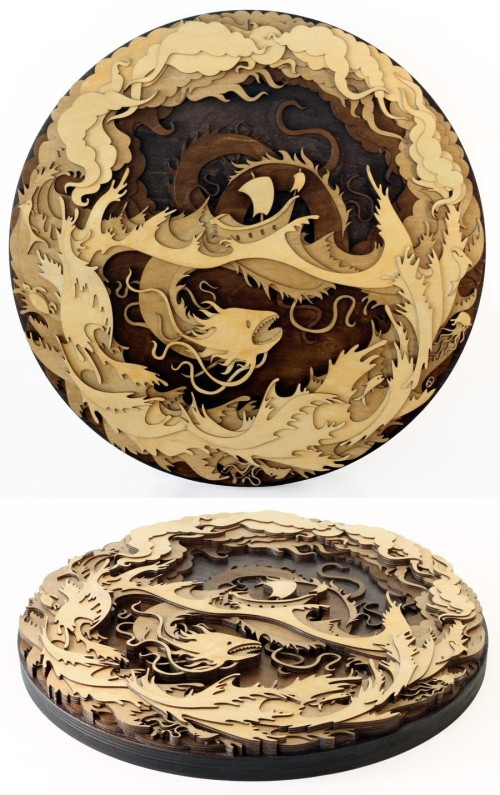
See more of Tomsky’s particularly beautiful work at his website. Unfortunately his images are not individually dated, but his copyright cites 2013, so that is the date I have used.
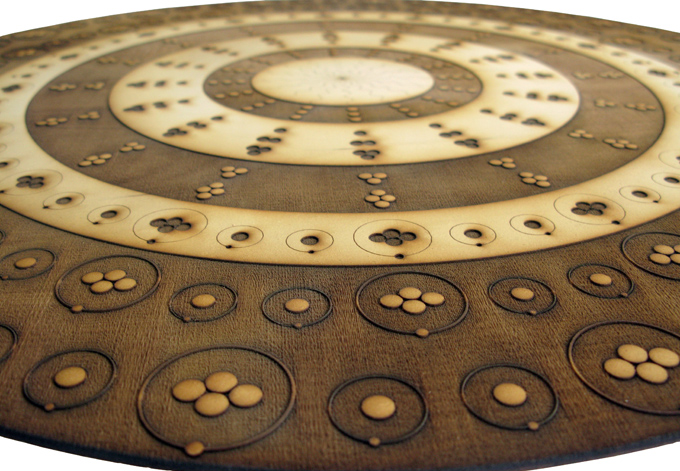
Misselbrook’s “Origin of the Universe” is a conical representation of hydrogen and helium, the elements from which our universe was built. It is comprised of fabric and laser-cut ash. Interestingly, Misselbrook laser-cut the fabric as well, and laid it over the cut ash. The burned edges and the fabric lend strongly to a DaVincian æsthetic.
More…









